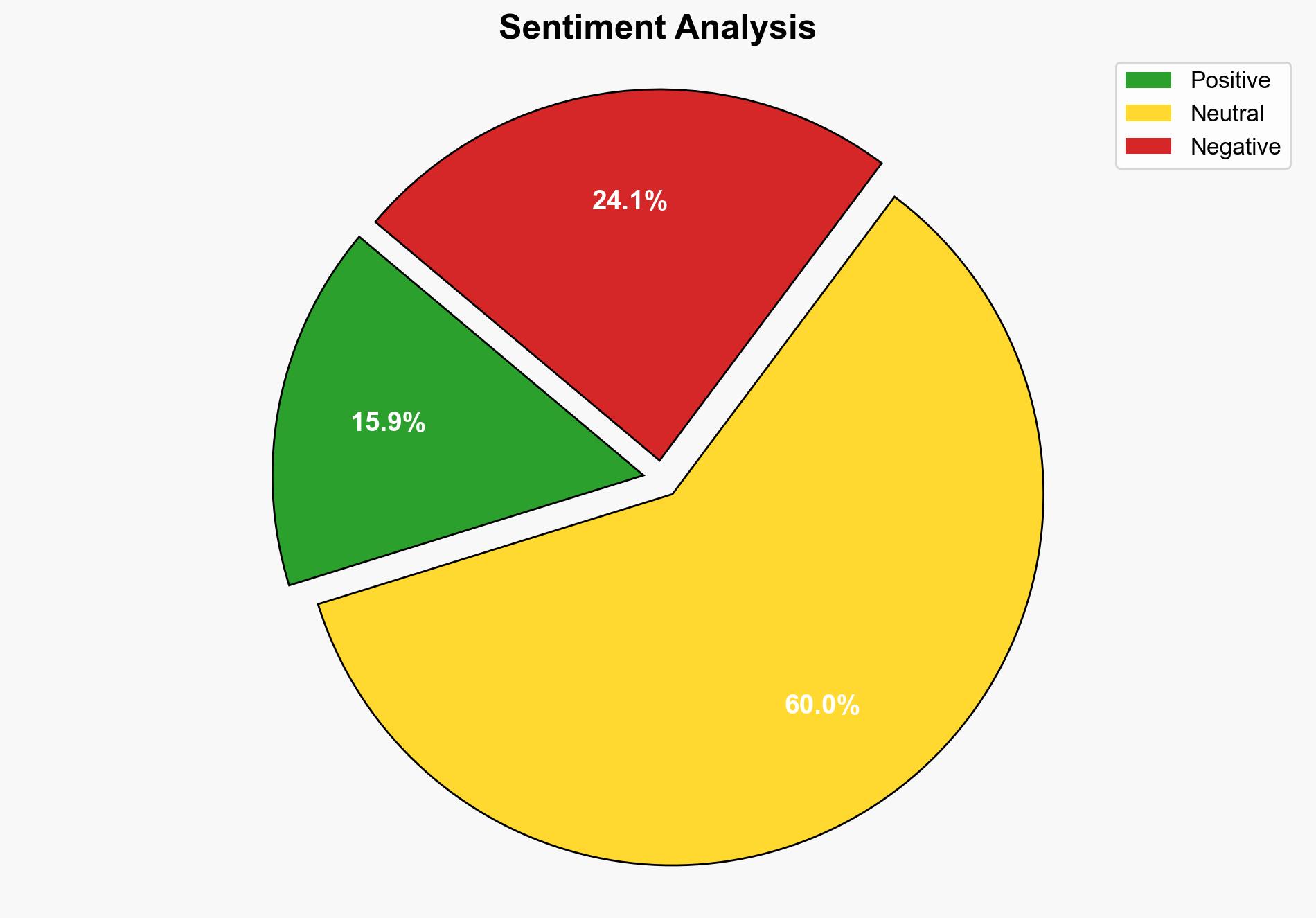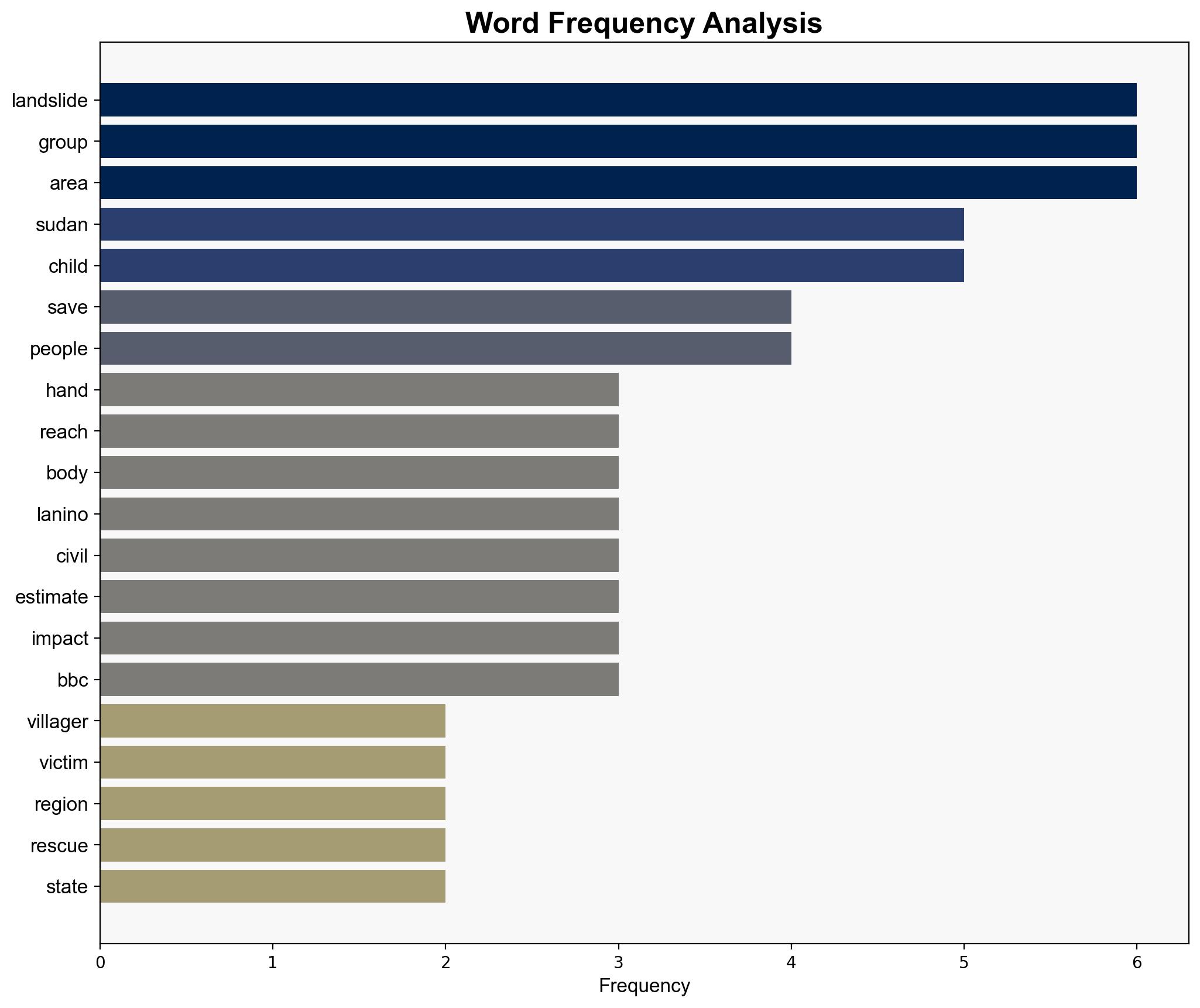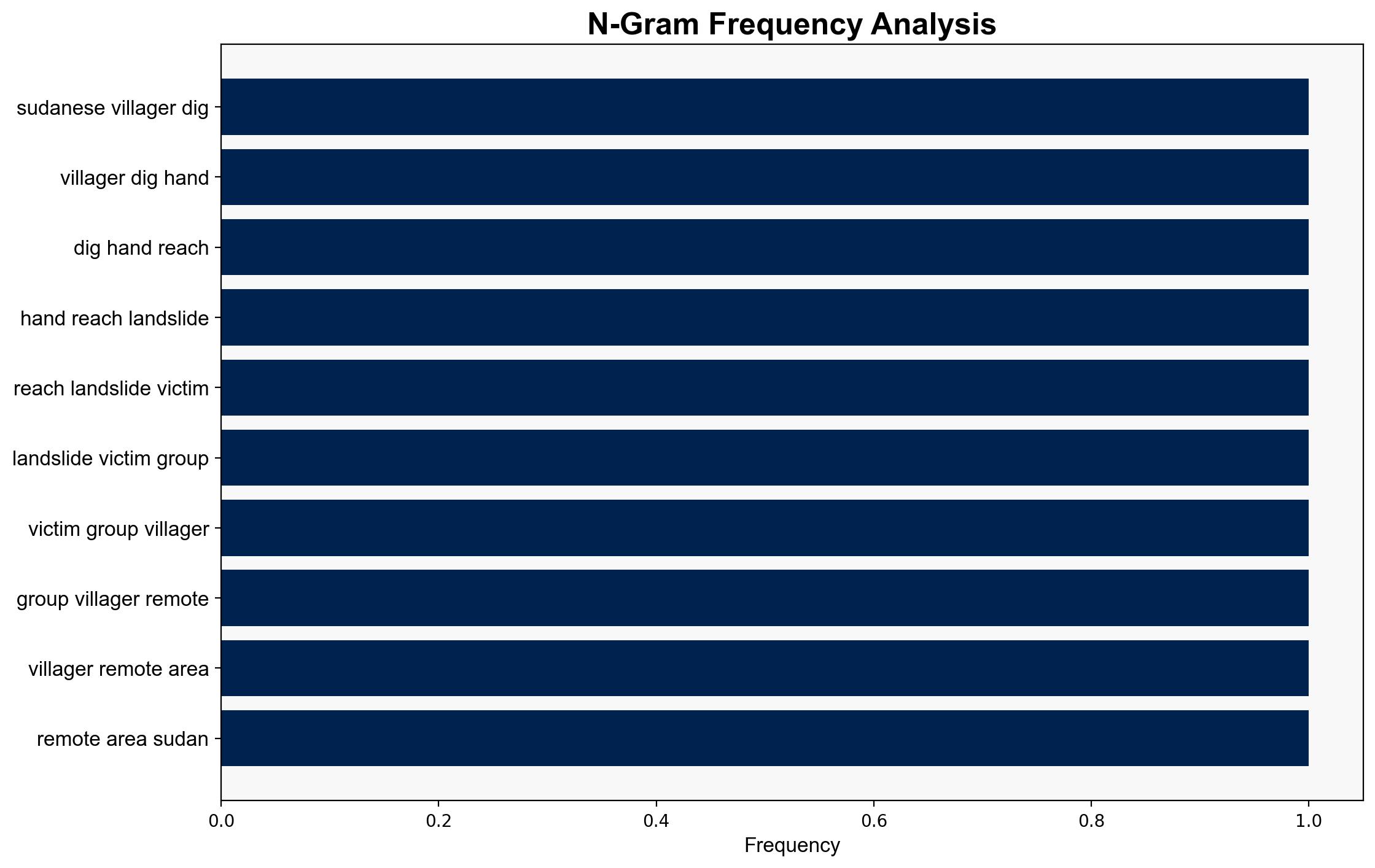Villagers use hands to reach victims buried in Sudan landslide group says – BBC News
Published on: 2025-09-06
Intelligence Report: Villagers use hands to reach victims buried in Sudan landslide group says – BBC News
1. BLUF (Bottom Line Up Front)
The most supported hypothesis suggests that the landslide in Sudan’s Western Darfur region is a significant humanitarian disaster exacerbated by ongoing civil conflict and logistical challenges. Confidence in this hypothesis is moderate due to limited verifiable data. Immediate international humanitarian assistance is recommended to address the crisis and prevent further loss of life.
2. Competing Hypotheses
1. **Hypothesis A**: The landslide is primarily a natural disaster compounded by heavy rainfall, with the response hindered by the region’s remoteness and lack of infrastructure. This hypothesis is supported by reports of heavy rainfall and the villagers’ reliance on manual excavation due to the absence of machinery.
2. **Hypothesis B**: The landslide’s impact is exacerbated by the ongoing civil war, which has strained resources and impeded effective disaster response. This is supported by the mention of the civil war’s impact on the region, including displacement and resource scarcity.
Using ACH 2.0, Hypothesis B is slightly better supported due to the broader context of civil conflict, which aligns with the reported logistical challenges and the involvement of armed groups.
3. Key Assumptions and Red Flags
– **Assumptions**: Both hypotheses assume accurate reporting of the landslide’s scale and the challenges faced by responders. There is an assumption that the civil war directly affects disaster response capabilities.
– **Red Flags**: Lack of independently verified casualty figures and the potential for biased reporting due to the involvement of specific groups like Save the Children.
– **Blind Spots**: Limited access to the region may obscure the full extent of the disaster and the effectiveness of the response.
4. Implications and Strategic Risks
The landslide, combined with ongoing civil conflict, poses significant humanitarian risks, including increased mortality and displacement. The disaster could further destabilize the region, complicating peace efforts and exacerbating the humanitarian crisis. There is a risk of international neglect due to competing global crises.
5. Recommendations and Outlook
- **Immediate Action**: Mobilize international humanitarian aid to provide essential supplies and medical assistance.
- **Short-term**: Facilitate access for aid organizations by negotiating safe passage with local armed groups.
- **Long-term**: Support conflict resolution efforts to stabilize the region and improve disaster response infrastructure.
- **Scenario Projections**:
– **Best Case**: Rapid international response mitigates the humanitarian impact, and peace talks progress.
– **Worst Case**: Continued conflict and inadequate response lead to a severe humanitarian crisis.
– **Most Likely**: Gradual improvement in aid delivery with ongoing challenges due to conflict.
6. Key Individuals and Entities
– Francesco Lanino
– Save the Children
– World Vision
7. Thematic Tags
national security threats, humanitarian crisis, regional instability, disaster response




